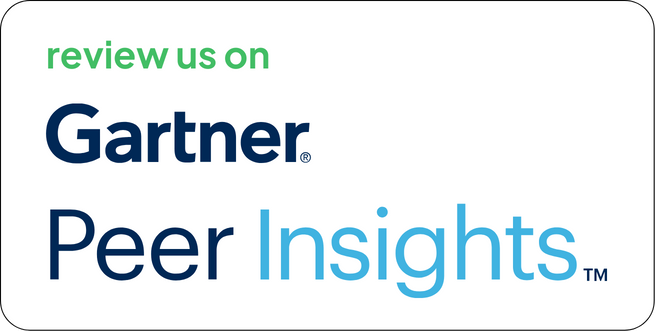Security teams today face a constant flow of vulnerability data. Tools like Fortify help surface vulnerabilities in applications and infrastructure, but managing and acting on this data effectively is often a different challenge.
After the scans, the next steps, figuring out which vulnerabilities to prioritize, assigning remediation tasks, and validating fixes, can create noise and delay.
This is where Strobes comes in. As part of its Continuous Threat Exposure Management (CTEM) platform,
Strobes integrates with Fortify to shift from static scan results to smart, risk-driven remediation workflows.
In this guide, we’ll walk through the purpose of this integration, how it works, and the value it delivers for security teams and DevOps alike.
What Is Fortify?
Fortify is a widely used application security solution offering Static Application Security Testing (SAST) and Dynamic Application Security Testing (DAST). It identifies vulnerabilities in the source code, web applications, and running applications. Fortify allows teams to assess the security posture of software and infrastructure by scanning for:
- Code vulnerabilities
- Misconfigurations
- Network exposure risks
- Runtime threats in DAST
Key features of Fortify include:
- In-depth scanning for web applications, databases, and other infrastructure
- Detailed reporting with Common Vulnerabilities and Exposures (CVE) identifiers
- Robust scan scheduling and asset management
However, Fortify lacks advanced capabilities like:
- Cross-tool correlation (e.g., combining findings from SAST and DAST)
- Risk-based vulnerability prioritization
- Deduplication across multiple scans and tools
- Workflow automation for tracking remediation progress
That’s where Strobes complements Fortify’s capabilities.
What Is Strobes?
Strobes is an AI-powered CTEM platform designed to connect vulnerability detection with actionable security outcomes. It unites:
- Risk-Based Vulnerability Management (RBVM)
- Pentesting-as-a-Service (PTaaS)
- Attack Surface Management (ASM)
- Application Security Posture Management (ASPM)
- Rather than replacing your existing scanners, Strobes serves as a central hub that:
- Collects and correlates data from scanners like Fortify, Qualys, Burp Suite, and others
- Prioritizes vulnerabilities based on real-world exploitability and asset importance
- Automates workflows to ensure vulnerabilities are addressed quickly and accurately
The result is reduced noise, faster remediation, and improved security posture across your organization.
The Purpose of Fortify Integration with Strobes
The Strobes-Fortify integration is designed for teams who:
- Use Fortify for SAST and DAST vulnerability scanning
- Struggle with alert fatigue and duplicate findings
- Need to speed up time-to-remediate critical vulnerabilities
- Require advanced reporting and visibility beyond raw scan outputs
By linking Fortify with Strobes, organizations can automatically import vulnerability data, deduplicate it, prioritize issues, and streamline remediation workflows, all while enhancing reporting capabilities.
What Fortify Integration with Strobes Actually Does
Once the integration is enabled, the following steps take place:
1. Data Ingestion from Fortify
Strobes connects to the Fortify API and pulls in key data such as:
- Asset details: IP addresses, operating systems, asset tags
- Vulnerability metadata: CVEs, QIDs, CVSS scores, severity, remediation links
- Detection information: Detection dates, patch states, and first/last seen data
This data can be ingested at scheduled intervals (e.g., daily or weekly) or on-demand, depending on the configuration.
2. Normalization and Deduplication
Once the data is ingested, Strobes parses and normalizes it into its internal data structure. Here’s how it works:
- Deduplication: Repeated findings across multiple scans (e.g., Fortify + other tools) are merged.
- Correlation: Identical vulnerabilities found across tools (like Fortify and Burp Suite) are identified and linked.
- Status Updates: Issues that have been fixed are automatically updated or closed, reducing the number of redundant alerts.
This minimizes unnecessary triage and ensures that only actionable findings are visible.
3. Risk Scoring and Prioritization
Strobes doesn’t just show a list of vulnerabilities. It re-evaluates each finding using a customized scoring model based on:
- Exploitability: Is this vulnerability actively being exploited in the wild?
- Asset importance: Is the asset exposed to the public, or is it part of a high-value system?
- Business context: Is this vulnerability on a production server or a testing environment?
- Asset sensitivity: Does it affect a critical application, such as a financial system?
This scoring ensures that the most critical vulnerabilities are prioritized, and teams can focus on the issues that matter most.
4. Workflow Integration
Once findings are prioritized, they flow into automated workflows, including:
- Ticket Creation: Automatically create tickets in Jira, ServiceNow, or other ITSM systems.
- Remediation Assignment: Assign findings to the relevant team based on ownership, asset tags, or severity.
- SLA Tracking: Set up Service Level Agreements (SLAs) to monitor remediation timelines.
- Fix Validation: Re-scan to validate that the vulnerability is fixed or manually verify if necessary.
- Notifications: Trigger alerts via email, Slack, or Microsoft Teams to keep the team updated.
With Strobes, every step from finding to fixing is automated, auditable, and tracked in real-time.
5. Unified Dashboards and Reporting
Instead of toggling between Fortify reports, spreadsheets, and multiple dashboards, Strobes provides:
- Vulnerability Views: See findings categorized by source (e.g., Fortify) and severity.
- Risk Heatmaps: Visualize vulnerabilities across assets and environments.
- SLA Trends: Track how quickly issues are being resolved, with actionable timelines.
- Compliance Reporting: Automatically generate compliance reports mapped to frameworks like NIST, ISO, and SOC 2.
These dashboards and reports support both tactical remediation efforts and strategic decision-making for leadership teams.
Key Advantages of Connecting These Tools
The Strobes-Fortify integration does more than just transfer data between systems. It transforms vulnerability management into a more proactive, risk-informed operation. Here’s why:
1. Eliminate Scan Data Overload
Most organizations run regular scans with Fortify. Over time, this produces vast amounts of findings, many of which are duplicates or low-risk issues. Strobes handles this by:
- Deduplicating findings across assets and environments
- Collapsing repeated issues into a single actionable item
- Automatically closing outdated vulnerabilities
This reduces alert fatigue and allows security teams to focus on the real threats.
2. Add Real-World Context
While Fortify provides detailed technical data on vulnerabilities, it doesn’t offer real-world context about how dangerous each vulnerability is. Strobes provides this missing layer by enriching Fortify findings with:
- Exploit intelligence (e.g., trending exploits)
- Asset context (e.g., public-facing or internal?)
- Business impact (e.g., is this a mission-critical app?)
This approach helps teams make smarter, risk-based decisions.
3. Align Remediation with Ownership and SLAs
In traditional workflows, findings are manually transferred, creating delays and accountability gaps. With
Strobes, findings are automatically turned into actionable tickets with:
- Clear ownership assignments
- SLA timers for remediation deadlines
- Automatic updates once the vulnerability is fixed
This ensures transparency and accountability across teams.
4. Scalable Reporting
Strobes turns raw Fortify scan data into customized, executive-friendly dashboards. These reports show:
- Vulnerability trends
- SLA compliance
- Risk exposure
These insights help communicate security posture clearly to stakeholders at every level.
5. Continuous Threat Exposure Management
The integration supports Continuous Threat Exposure Management (CTEM), providing real-time updates as vulnerabilities are discovered, fixed, and re-validated. The feedback loop ensures that your security posture is continuously updated, rather than relying on periodic scans.
Where This Fortify Integration with Strobes Fits Best
This integration is ideal for:
- Enterprises with large-scale vulnerability management programs
- DevSecOps teams that need security without slowing down development
- Compliance-driven industries that require structured workflows and audits
- Organizations with hybrid or multi-cloud environments
Final Thoughts
Fortify identifies vulnerabilities. Strobes help you prioritize, automate, and remediate them quickly.
Fortify Integration with Strobes transforms the way teams handle vulnerabilities, turning what was once a manual, reactive process into a smart, risk-driven operation. Ready to see it in action?
Get started today by connecting your Fortify account to Strobes and transform your vulnerability management process into a more efficient, automated system.





